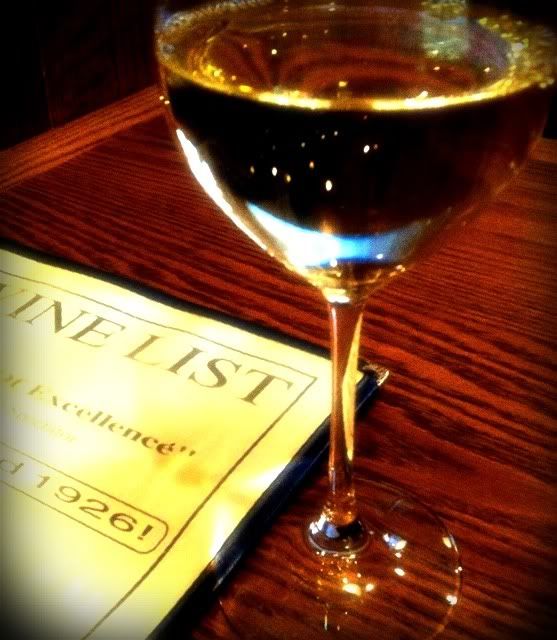One day while toiling away among the tall buildings of downtown L.A., I received this text from my wife: "I am drinking
Domaine Bois Saint Denis Sancerre. My namesake. $13 glass of Sancerre." She followed up with a couple of notes, "soil is limestone with clay overlay. You can taste it." So cute,
her sending
me wine tasting notes.
Maybe another husband would have been upset with the wife for rubbing it in that she was lolling about with an old friend unseen for years, having a wine outdoors at the Farmers Market on a sunny day while the hubby worked.
Not me. I really like that others can enjoy wine at times when I cannot. It's a pleasure to read social media updates from around the world from people who obviously have a long head start on me, while I am still on my first cup of coffee for the day. It's just as much a pleasure to know that my hard-working wife is having a richly deserved respite. Besides, it's her namesake - although in the masculine form.
In ensuing updates, my wife promised to send me a picture - which she did, see left - and to take copious notes on her impressions of the wine. Somehow, I figured that that those notes would fall by the wayside. They did, and that's okay. All the catching up required after a fifteen-year separation takes precedence over pecking away at an iPhone to record thoughts on the wine at hand. At least that's what I am told.
The copious notes were boiled down to a single impression about the wine that stuck with her: minerality. The sensation of minerals in wine comes across differently for different palates. Some get wet rocks, some describe a flinty taste, some say it’s like earth, some call it savory. Some of us like to think it’s there because of
terroir, what’s in the earth where the grapes grow. Scientists tell us we are wrong, that the mineral content of the earth is not present in the smell or taste of wine sufficiently to be discerned.
But my wife loved the “limestone-y flavor” of the Loire Valley wine she enjoyed so much at lunch. We have both enjoyed the similar chalkiness in the wines of Edna Valley, and the ones from the oyster-shell dirt of Ancient Peak’s Santa Margarita Vineyard. If we are not tasting the minerals in which the grapes grew, what are we tasting?
One
wine writer thinks we may be talking about acidity when we talk about minerals, and that makes sense. Acidity is what makes a wine pair well with food, and my wife’s Sancerre was just the ticket for pairing with her salad, she said.
So, if all you can remember about a wine you taste is one word, that is probably the one word you should remember. It’s the one thing about the wine that made the biggest impression on you. And if that word happens to be “minerality,” try wines that are higher in acidity. You may find a whole new word to remember.
Follow Randy Fuller on Twitter


